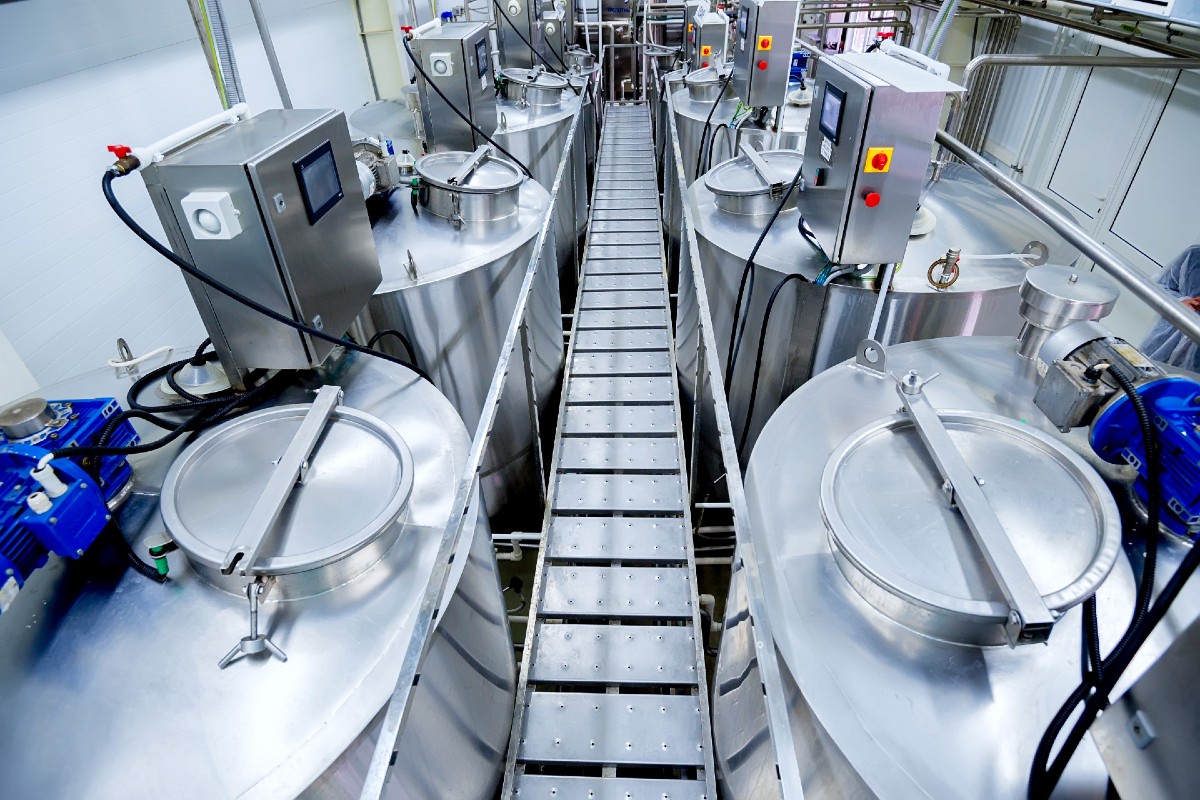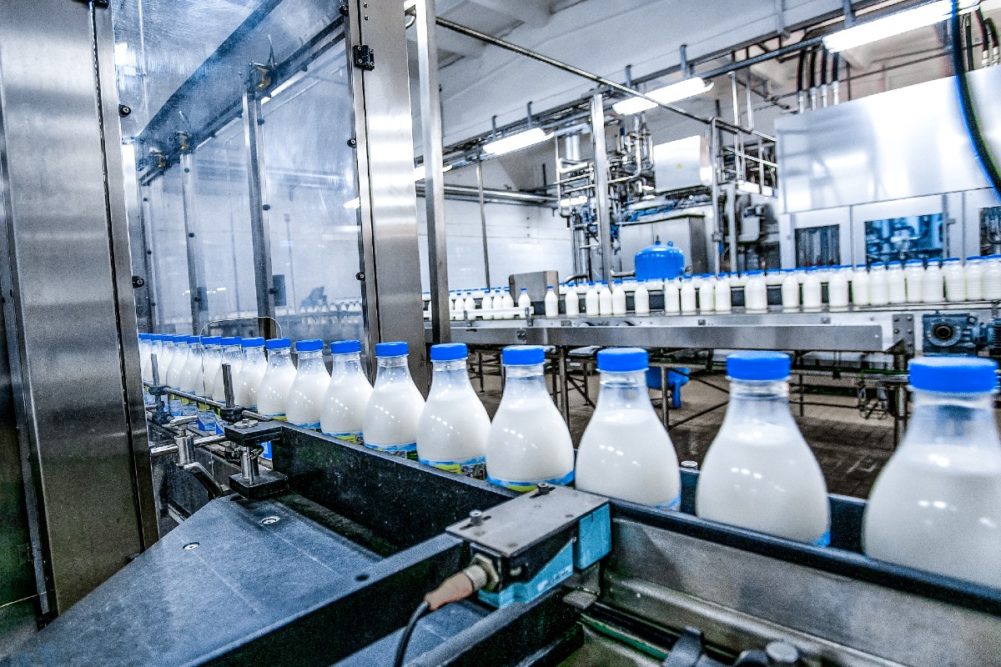More than two decades into overseeing the company’s work toward digitizing the dairy supply chain, Scott Sexton, the chief executive officer for Dairy.com by Ever.Ag, realizes the industry still could benefit a great deal from further modernization.
Because dairy is a complicated industry, involving a perishable, multicomponent product and heavy regulation, Sexton said the steps along the way that get milk from a farm to a finished good that sits in a grocery store need to be digitized.
“It doesn’t happen overnight,” he said. “Many, many players across that value chain have been making investments.”
In 2022, awareness and interest in modernizing the industry’s infrastructure are higher than ever, Sexton added, as more people within the world of dairy processing either hear of or experience firsthand the benefits of operating with “real-time, transparent and digital” information.
Chirag Pandya, a partner at business consulting firm McKinsey & Company, agrees that there are a few areas from cow to consumer wherein the dairy industry would benefit from modernizing. At the processing plant level, Pandya said he would start with automation and control. In his experiences, Pandya said he has come across multiple plants that still utilize PLCs, HMIs and control panels that aren’t even supported by OEMs or have parts that have become obsolete.
“Dairy processors tend to underinvest in plant automation overall, and it is one of the big improvement opportunities for the industry,” Pandya said.
While sometimes a return on investment perspective can make such automation projects appear unappealing or challenging, he recommended considering the larger picture.
“In my view, some critical automation upgrades are some of the most important strategic projects dairy processors should be undertaking,” Pandya said.
Similarly, Lindsay Datlow, a principal advisor specializing in agtech and consumer goods at SAS, said there always are opportunities to modernize and optimize.
“Companies have an abundance of data at their fingertips,” Datlow said, “and with advanced analytics, businesses can use that information for more robust and data-driven decisions.”
From ingredient inputs and optimization to nutrition and food safety, Datlow said utilizing data can help lead to increased revenue, as well as decreased operational risks.
More companies are shifting toward overhauling old practices, Sexton said, citing more macro external pressures for the updates he sees taking place. Not only are regulations playing a part, he explained, but there also exists a push from outside the industry – consumers and other parties want to know more about agricultural supply chains and how they function.
“Was the product responsibly produced and delivered to my plate? I think those are some of the overarching themes,” Sexton said. “Plus, with some of these promises that are being made by branded food companies or CPGs, or processors or retailers, those promises need proof. You need to be able to prove that in real time, be able to disclose how your value chain functions. What kind of energy does it use? What kind of carbon and greenhouse gases does it emit? All of that is culminating into a much more complicated environment to operate in. There are greater demands on processors.”
Technologies already accessible
As the industry overall appears to be moving toward a new era, Datlow said some of the most accessible technologies processors should be using involve data. She said SAS, which provides business analytics software and services, encourages companies to look at their current operation and determine which key areas would benefit from more of a data-driven approach to decisions.
“Data can play a huge role in helping a business get ahead in the market,” Datlow said. “This could look like integrating novel data into the traditional processing decisions using Internet of Things (IoT) sensors that allow for more optimized processing, or anomaly detection and alerting, or using AI and analytics to optimize ingredient formulations for new products.”
What’s more, the present reality of doing business has to take into account the pressures on labor and fuel, Pandya pointed out. Those factors, he added, should encourage more companies to incorporate new technologies into their strategies.
“Whether it is an advanced algorithm that allocates milk to different plants based on highest gross margin potential looking at sales orders or putting in automated filling machines that also self-calibrate and standardize milk, there are plenty of opportunities,” Pandya said.
Another possibility that he already sees becoming more prominent is putting machine ecosystems into practice. Pandya described them as functioning almost like a Facebook or social media app for machines, allowing one machine to communicate with another up or down stream that is about to stop. Such upgrades significantly reduce waste and the necessity for labor coordination across various plant control points, he explained.

Consumer consciousness could drive product innovation, plant upgrades and capitol allocation, as well, Pandya said. If innovations are driven by consumer insights – gained either through partnerships with retailers or independently – he sees there being a lot better chances of success.
Inside of plants, many companies already use manufacturing intelligence systems. Many of Dairy.com’s customers, Sexton shared, utilize Orbis MES, which connects to equipment on the automation line and can communicate all of the tracking, while monitoring multiple factors, from the weigh bridge to the meter intake, all the way out to the finished good.
The system also monitors energy utilization, while providing complete tracking and tracing of the process.
“So it’s a really powerful tool that helps you not only better operate with less loss and shrink, and maximize use of those ingredients,” Sexton said, “but it also creates a full genealogy of all of these components as they flow through your operation.”
Quality management is another area where processors easily could modernize if they haven’t already, he added. While Sexton said “a lot” of such work still involves paper logs at some plants, Dairy.com offers software by QA Studio that is pre-tailored for dairy manufacturing and manages the quality process digitally.
On the horizon
Of course, modernization and innovations never stop. So there inevitably will be more options just around the corner for dairy processors looking to rejuvenate or improve upon an already successful business model.
Datlow said AI capabilities are becoming more ubiquitous, and added SAS always is looking for innovation partners to drive value in new ways. She said new solutions on the horizon could help enhance production and/or ingredient optimization.
“We even aim to use analytics to further the health of the planet,” Datlow said. “When you think of the variety of data required behind ESG initiatives, for example, we are working with our partners to develop solutions to help with data-driven reporting.”
Sexton also views data science as an exciting opportunity for manufacturers to optimize sales and maximize profitability of operations.
“It’s not just collecting the data. It’s beginning to point some really powerful data scientists and engines against that data,” he said. “And historically that sounded somewhat ‘Star Wars’ or intergalactic, but now it’s readily available and it’s coming. And it’s very meaningful.”
Although data-driven decisions may be in the “early adopter, pioneer” phase for some processors, Sexton said many companies diving in are seeing “significant” financial results.
Risks of not modernizing
On the opposite end of the spectrum, failing to modernize could potentially hurt processors.
Pandya said milk and milk products have been relatively low margin businesses historically, with limited leverage for processors across most channels. That’s why plant operations, he added, typically become a source of “distinctive strategic advantage.”
As an example, Pandya said if one processor is making a product at a 65-70% OEE level and another is making the same product at a 40-50% OEE, the cost structure would hold the second company back.
He also pointed to two other risks that accompany choosing not to modernize: extra-long lead times for upgrades and new equipment, as well as 2022’s high inflationary environment.
Failing to modernize, in Datlow’s view, involves an opportunity cost if companies aren’t as efficient in their day-to-day operations as a result.
“The most obvious risk is revenue decline from not being able to produce the same, or more, products in a cost-efficient manner,” she said. “As analytics capabilities become more and more common across the industry, those not investing in data-driven modernization risk falling behind. It could manifest as inefficient dairy production or lack of new products or any other myriad of issues that could come from not using the data at your fingertips to make the best business decisions.”
Whether a company is measuring its carbon footprint or utilizing its modernization efforts to back up sustainability claims that appeal to consumers, Sexton said embracing technological innovations for the industry can be important to brand building.
“You have to be looking forward and you cannot put your head in the sand and say, ‘We’re just going to keep doing it the way we did,’” he said. “You’ve got to start making investments, because I don’t see the environment or the business climate going backwards.”
Many within the industry consider technology as a necessary investment. Datlow said when companies modernize there always are a few costs to keep in mind – not only software and hosting, but also the human element of making a commitment to refining internal data resources for analytics.
“We’ve found for our clients that it’s almost always worth the effort to build long term value,” she said.
The costs associated with a commitment to modernizing, Pandya said, depend on a company’s product mix, asset age, end channels and growth ambitions.
“Bolder global players have always been at the forefront of deploying latest technologies across the value chain and more often than not have outperformed the industry and even opened new premiumization opportunities within existing channels,” he explained.
The most significant risks that come with not modernizing, Pandya added, are the possibilities of losing competitive bids, having lower margins than competitors due to a higher cost burden and, at the extreme end, going out of business as the product portfolio becomes obsolete or value-destroying for the processor.
Sometimes companies hesitate to modernize, but Sexton thinks tech has become more affordable and accessible. He said Dairy.com prides itself on making its software specifically for the industry.
“You can very quickly deploy these applications at an affordable cost, versus having to build them from scratch or extend some type of a homegrown system or internal system,” he said.
There also are some hidden costs of which Sexton said he likes to make people aware. He made it clear that if an organization isn’t prepared for change, with budgeted project dollars for change management, a company could fail to find the results it is seeking.
“You can have terrific technology, but if you haven’t oriented your organization to prepare for the change, prepare for the adoption and even budgeted project dollars toward that change management piece, then you could find it’s more expensive and you get less return on your tech investments.”

